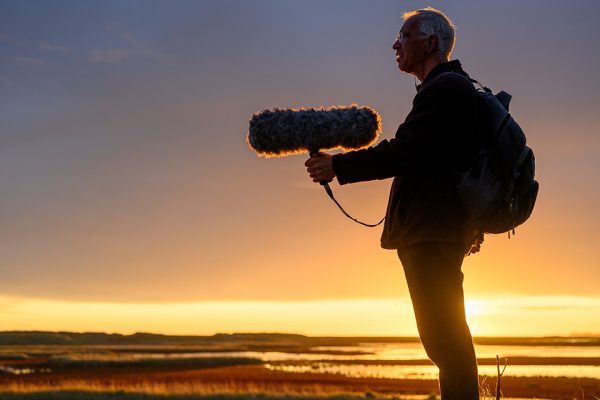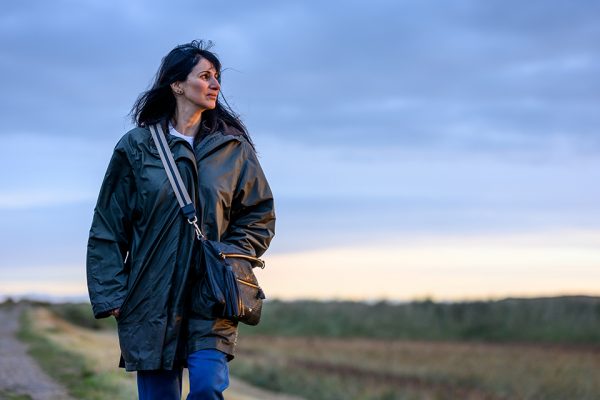Capturing the Dawn at Cley
The team is up at 05:30 to catch the dawn. On the horizon it’s started to emerge: a line of orange, soon lightening to yellow with dots of grey cloudlets, the blackness turning to blueness, the blankness morphing slowly into a patterned tattoo of cloud and sky.

From the nearby wood, there’s the distant hooting of owls and occasional squawks and sqwonks from pheasant and geese. To the north, the rustling of reeds and the random swooshing of waves on a shingle beach. Everyone is ready with their recorders, cameras, microphones, notebooks.
This is the latest of several field trips that Mona Arshi is making as she develops her work for Future and Form. Alongside her are producer/director Marcus Romer from the digital production partner Mutiny; sound artist, musician and recordist Peter Cusack; and local photographer Matthew Usher.
The team is on a mission to capture the sounds and sights of Cley on the North Norfolk coast. Mona is currently poet in residence at NWT Cley Marshes, Norfolk Wildlife Trust’s oldest and best-known nature reserve, and she is using her time there to develop a new approach to poetry-making.
‘It is difficult to have one perception of Cley,’ she says. ‘It is so rich.’
Cley is a place of weather and wildlife, sea and saltmarsh, wind and rain. A place where the elements force change upon the landscape on an almost daily basis.
‘The beach at Cley is never the same. It changes and evolves,’ observes Marcus Romer. ‘The collapsed building was covered in shingle on my first visit, and then I returned and it was gone!’
Mona and her team are aiming to capture the varying atmospheres of Cley – and in particular to explore the variety of bird life that can be seen and heard on the marsh at different times of day and night, and in different seasons.

It’s not just the dawn they want to capture. At night they have also been out in the field, often in the pouring rain as darkness falls. On one occasion, Peter decides to capture the sound of rain from ‘underwater’ and spends a soggy hour lowering his microphones into an inky ditch, while Mona and Marcus illuminate the scene with small pocket torches. Everyone in the group is ready to do their bit.
‘The sound is very important,’ says Mona. ‘I can listen to it and work out where the poems are coming from…deeper poems that take in what Cley represents a bit more. The idea that it is transient, impermanent…an acceptance that there is a fragility to the landscape.’
With Peter’s and Mutiny’s help, Mona is assembling a library of sounds and experiences from Cley, not just for reference but as resources for new writing.
She is composing a set of poems using both collage and more traditional forms such as the Ghazal and the sonnet, as well as erasure poems and poems with a more experimental fragmented nature. She’s also planning to work in a sound studio with the composer Sandy Nuttgens.
The work is currently imagined by Mona as an installation in the visitor centre at Cley and as a set of poems that can be listened to on the track at Cley or remotely. She plans to produce an expanded soundtrack with Mutiny, combining the spoken poetry and audio signal processing.
For those who get to encounter the work in May next year, they’ll not only be wrapped in the sounds of Cley, but there will be a sense of the poems alive in the world, with the listener’s presence also exerting an influence on how the work itself might shift and change over time.
‘These poems are not just for the page,’ says Mona. ‘They are restless poems which are going to exist in sound. I’m writing differently. I am writing for sound. I am writing for a different destination.’
For Mona, this is also a chance to engage new audiences – in particular urban audiences and people who may not have access to the countryside normally, or even be aware of such locations. It’s a new way of working — with sound artists, with digital producers, with software — and Mona hopes it might lead to a new kind of relationship with readers. Or rather, with active, engaged listeners.